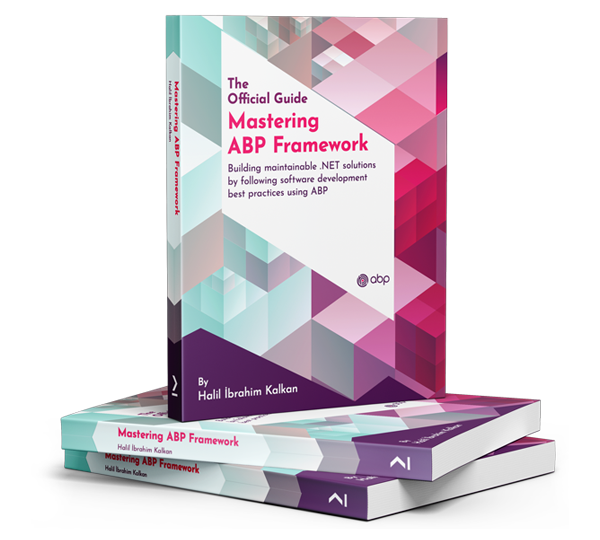[connect] said: No it doesn't help. I tried to run some small script as follows but still i getting the same error. I dropped my collections in local mongodb then it worked. How can i fix this to my production now?
public static class MongoDBGUIDMigrations { public static async Task Migrate() { BsonSerializer.RegisterSerializer(new GuidSerializer(GuidRepresentation.Standard)); var connectionString = "mongodb://localhost:27017"; // Replace as needed var dbName = "your-database-name"; // Replace with your DB name var settings = MongoClientSettings.FromConnectionString(connectionString); var client = new MongoClient(settings); var database = client.GetDatabase(dbName); // STEP 3: Get all collection names var collections = await database.ListCollectionNamesAsync(); var collectionNames = await collections.ToListAsync(); Console.WriteLine($"Found {collectionNames.Count} collections."); foreach (var collectionName in collectionNames) { Console.WriteLine($"\n🔄 Processing collection: {collectionName}"); // Use BsonDocument to handle dynamic schemas var collection = database.GetCollection<BsonDocument>(collectionName); var documents = await collection.Find(FilterDefinition<BsonDocument>.Empty).ToListAsync(); int updatedCount = 0; foreach (var doc in documents) { var id = doc.GetValue("_id", null); if (id == null) { Console.WriteLine("Skipping document without _id"); continue; } // Replacing with same document will reserialize with Standard Guid format var filter = Builders<BsonDocument>.Filter.Eq("_id", id); await collection.ReplaceOneAsync(filter, doc); updatedCount++; } Console.WriteLine($"✅ Updated {updatedCount} documents in collection: {collectionName}"); } Console.WriteLine("Migration complete. All documents now use UuidStandard format for Guids."); } }
Hi, to fix this problem, you should say to the driver to use the old format. There is a really good community article that exactly explains how to do that, which you can check at https://abp.io/community/articles/solving-mongodb-guid-issues-after-an-abp-framework-upgrade-tv8waw1n.
Can you check the article and apply the suggested solution? It should fix your problem.
[IgorG] said:
[EngincanV] said:
[IgorG] said:
[EngincanV] said:
[IgorG] said:
for some reason i get an error
Volo.Abp.Studio.AbpStudioException: Exception of type
'Volo.Abp.Studio.AbpStudioException' was thrown.i logged in using command:
abp loginWhat is your license type? (It should be
BusinessorEnterpriseto be able to get the source code of the module.)i have a Team license. In this case how can i get markup of the UserManagement.razor page ?
Okay, no problem. I’ve shared the related file with you via email — please check your inbox and let me know if you need any further assistance.
Thank you. I see the layout. Can you also send me a code behind file ?
Sure, sent it over via email.
[david1] said: I don't believe the CRUD page generator is actually generating any code successfully because it is crashing before completing even step 1 (out of 10 steps). Is there somehow I can check what is causing the validation to fail that I can check and resolve?
After the error occurs during the first step, does the code generation still continue and show you an information dialog?
In my case, it threw a similar error but still completed the code generation and displayed an information dialog indicating success. I reviewed the generated code, and everything looked correct — I was even able to run the application and test it without issues.
I found that the root cause was a project I had moved on my machine, which was still pointing to its old location in the Suite's appsettings.json file (this file keeps a list of all solutions added to Suite). Once I corrected the path in that file, the problem was resolved.
Could you check if the same applies in your case?
[IgorG] said:
[EngincanV] said:
[IgorG] said:
for some reason i get an error
Volo.Abp.Studio.AbpStudioException: Exception of type
'Volo.Abp.Studio.AbpStudioException' was thrown.i logged in using command:
abp loginWhat is your license type? (It should be
BusinessorEnterpriseto be able to get the source code of the module.)i have a Team license. In this case how can i get markup of the UserManagement.razor page ?
Okay, no problem. I’ve shared the related file with you via email — please check your inbox and let me know if you need any further assistance.
[david1] said: Regarding the auto-response suggestions: I checked DbContext for duplicate lines although the entire solution compiles successfully so there are no compilation issues causing it. Furthermore, I have done a full re-install of ABP Suite (both Microsoft Store version and standalone installer) so this should've cleared the internal ABP Suite cache as well.
Hi, the issue isn’t with the code generation itself, but rather during the validation of the solution/projects that happens before the generation starts. That’s why you see this error message, even though the code generation completes successfully.
I’ll go ahead and create an issue for this. Thanks for reporting it!
[rogercprops] said: Tried both commands and they failed dotnet tool install -g Volo.Abp.Suite --add-source https://nuget.abp.io/<mykey>/v3/index.json Tool 'volo.abp.suite' failed to update due to the following: The settings file in the tool's NuGet package is invalid: Entry point file 'Volo.Abp.Suite.dll' for command 'abp-suite' was not found in the package. Tool 'volo.abp.suite' failed to install. Contact the tool author for assistance. rogerhopkins@Rs-MBP-3 .store % dotnet nuget add source https://nuget.abp.io/<mykey>/index.json error: The source specified has already been added to the list of available package sources. Provide a unique source.
When you run abp login-info command, do you see your organization, email etc.?
For example:
[htalavera] said: Got it. We were able to make it work. Thank you for the assistance.
Thank you for the detailed explanation. Happy to help :)
[IgorG] said:
for some reason i get an error Volo.Abp.Studio.AbpStudioException: Exception of type 'Volo.Abp.Studio.AbpStudioException' was thrown.
i logged in using command:
abp login
What is your license type? (It should be Business or Enterprise to be able to get the source code of the module.)
[rogercprops] said: I ran the abp suite command abp suite [07:59:30 INF] You are running the second generation of the ABP CLI. If you're interested in the legacy CLI, see https://abp.io/new-cli Checking extensions... 📌 ABP CLI 1.0.1 The application to execute does not exist: '/Users/rogerhopkins/.dotnet/tools/.store/volo.abp.suite/9.2.0/volo.abp.suite/9.2.0/tools/net9.0/any/Volo.Abp.Suite.dll'.
So I went through the steps to do a clean uninstall here: https://abp.io/docs/latest/suite/how-to-uninstall
I tried reinstalling and got this message: abp suite install [08:06:44 INF] You are running the second generation of the ABP CLI. If you're interested in the legacy CLI, see https://abp.io/new-cli Checking extensions... [08:06:46 INF] Installing ABP Suite latest version... Tool 'volo.abp.suite' failed to update due to the following: The settings file in the tool's NuGet package is invalid: Entry point file 'Volo.Abp.Suite.dll' for command 'abp-suite' was not found in the package. Tool 'volo.abp.suite' failed to install. Contact the tool author for assistance.
So then I uninstalled ABP Studio, downloaded the install package and reinstalled. In Studio I tried to open Abp Suite and got a prompt that it wasn't installed and asked if I wanted to install. I accepted and that install failed.
So I ran abp suite from terminal and got this message: abp suite install [08:08:27 INF] You are running the second generation of the ABP CLI. If you're interested in the legacy CLI, see https://abp.io/new-cli Checking extensions... [08:08:28 INF] Installing ABP Suite latest version... Tool 'volo.abp.suite' failed to update due to the following: The settings file in the tool's NuGet package is invalid: Entry point file 'Volo.Abp.Suite.dll' for command 'abp-suite' was not found in the package. Tool 'volo.abp.suite' failed to install. Contact the tool author for assistance. [08:08:36 INF] You can also run the following command to install ABP Suite. [08:08:36 INF] dotnet tool install -g Volo.Abp.Suite --add-source https://nuget.abp.io/<your-private-key>/v3/index.json
Hi, it looks like nuget.abp.io hasn't been added as a global NuGet source, which is why you're encountering this issue. You can resolve it by installing ABP Suite using the following command:
dotnet tool install -g Volo.Abp.Suite --add-source https://nuget.abp.io/<your-private-key>/v3/index.json
Alternatively, you can first add the NuGet source globally with:
dotnet nuget add source https://nuget.abp.io/<your-private-key>/v3/index.json
Then, install ABP Suite by running:
abp suite install
[IgorG] said:
[EngincanV] said: Hi, when you need to add new columns or extend existing module entities, the recommended approach is to use Module Entity Extensions. This method automatically includes the new columns in the DataGrid, as well as in the create and update forms.
However, it doesn't support autocomplete functionality out of the box. From your scenario, it looks like you need an autocomplete component that can filter or search for an entity record as the user types. In this case, you'll need to implement the required changes manually.
To do this:
- Override the
UserManagement.razorpage in the identity-pro module.- Add your custom autocomplete component to both the edit and create models.
- On the backend side, extend the
IdentityUserentity in your application by creating a new user entity and add your custom logic accordingly.Regards.
Override the UserManagement.razor page in the identity-pro module. - in this case i need the layout of the UserManagement.razor page. Where can i get it ?
Hi, you can get the source code of the identity-pro module with the following command:
abp get-source Volo.Abp.Identity.Pro
This command will install the source code of the Identity Pro module (I guess you have access?), and then you can find the UserManagement.razor in the Blazor project.
Regards.

